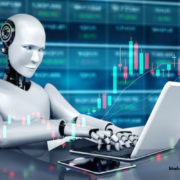In the world of foreign exchange (Forex) trading, where market conditions are constantly evolving, the ability to adapt and evolve trading strategies is essential for success. With the emergence of evolutionary computing techniques, Forex traders now have a powerful tool at their disposal to create adaptive and robust trading systems. In this article, we delve into the potential of evolutionary computing in Forex robot evolution, exploring how these advanced algorithms can optimize trading strategies and navigate the complexities of the Forex market.
Understanding Evolutionary Computing
Evolutionary computing is a branch of artificial intelligence inspired by the principles of biological evolution. It involves simulating natural selection, mutation, and reproduction to evolve solutions to complex optimization problems. In the context of Forex trading, evolutionary computing techniques such as genetic algorithms, genetic programming, and evolutionary strategies can be used to evolve trading strategies and parameters.
The Evolutionary Process
The evolutionary process begins with the creation of an initial population of candidate solutions, representing potential trading strategies or parameters. These solutions are evaluated based on their performance using predefined fitness criteria, such as profitability, risk-adjusted return, and drawdown.
Next, the evolutionary algorithm applies genetic operators such as selection, crossover, and mutation to generate new candidate solutions. Selection operators identify promising solutions based on their fitness, while crossover operators combine features from multiple solutions to create offspring. Mutation operators introduce random changes to the solutions to explore new areas of the solution space.
The process iterates over multiple generations, with each generation producing increasingly better solutions through a process of natural selection and adaptation. Eventually, the algorithm converges to one or more optimal solutions that meet the desired criteria.
Application to Forex Robot Evolution
Evolutionary computing techniques can be applied to evolve Forex trading strategies and parameters in several ways:
- Optimization of Trading Strategies: Evolutionary algorithms can optimize the parameters of trading strategies, such as entry and exit rules, stop-loss levels, and position sizing criteria. By evolving these parameters, traders can fine-tune their strategies to maximize profitability and minimize risk.
- Portfolio Optimization: Evolutionary algorithms can optimize the allocation of capital across multiple trading strategies or assets to maximize returns while minimizing risk. By evolving portfolio allocations dynamically, traders can adapt to changing market conditions and achieve better risk-adjusted returns.
- Feature Selection: Evolutionary algorithms can identify the most relevant features or indicators for predicting market movements and generating trading signals. By evolving feature sets dynamically, traders can improve the accuracy and robustness of their trading strategies.
- Risk Management: Evolutionary algorithms can optimize risk management parameters, such as position sizing rules, stop-loss levels, and leverage constraints. By evolving risk management strategies, traders can minimize the impact of adverse market events and preserve capital over the long term.
Advantages of Evolutionary Computing
Evolutionary computing offers several advantages for Forex robot evolution:
- Adaptability: Evolutionary algorithms can adapt to changing market conditions and evolve trading strategies in response to new information or trends. This adaptability enables traders to stay ahead of the curve and capitalize on emerging opportunities.
- Robustness: Evolutionary algorithms produce robust solutions that are less susceptible to overfitting and data snooping biases. By evolving trading strategies over multiple generations, traders can ensure that their strategies are robust and reliable across a wide range of market conditions.
- Exploration of Solution Space: Evolutionary algorithms explore a vast solution space efficiently, enabling traders to discover novel trading strategies or parameter configurations that may not be apparent through manual analysis. This exploration capability allows traders to uncover hidden opportunities and optimize their strategies more effectively.
- Automation: Evolutionary algorithms can be fully automated, allowing traders to optimize their trading strategies without manual intervention. This automation streamlines the process of strategy development and evolution, enabling traders to focus on other aspects of their trading operations.
Challenges and Considerations
Despite its potential benefits, evolutionary computing in Forex robot evolution presents several challenges and considerations:
- Computational Complexity: Evolutionary algorithms can be computationally intensive, especially when optimizing complex trading strategies or large parameter spaces. Traders must have access to sufficient computational resources to run evolutionary simulations efficiently.
- Parameter Sensitivity: The performance of evolutionary algorithms may be sensitive to the choice of parameters, such as population size, mutation rate, and selection criteria. Traders must carefully tune these parameters to ensure optimal performance and avoid premature convergence to suboptimal solutions.
- Data Quality: The quality and relevance of the data used to evaluate trading strategies can significantly impact the performance of evolutionary algorithms. Traders must ensure that their data is clean, accurate, and representative of real-world market conditions to produce reliable results.
- Interpretability: Evolutionary algorithms may produce complex and opaque solutions that are difficult to interpret or understand. Traders must analyze the evolved solutions carefully and validate them using out-of-sample testing to ensure their robustness and reliability.
Conclusion
In conclusion, evolutionary computing holds great promise for Forex robot evolution, enabling traders to optimize trading strategies, portfolio allocations, and risk management parameters dynamically. By simulating natural selection and adaptation, evolutionary algorithms can evolve solutions to complex optimization problems efficiently and effectively.
However, realizing the full potential of evolutionary computing in Forex robot evolution requires overcoming various challenges and considerations, including computational complexity, parameter sensitivity, data quality, and interpretability.
Nonetheless, the integration of evolutionary computing techniques into Forex trading represents a significant advancement in the field of algorithmic trading, empowering traders to create adaptive, robust, and profitable trading systems in the dynamic and competitive Forex market.

















Comments